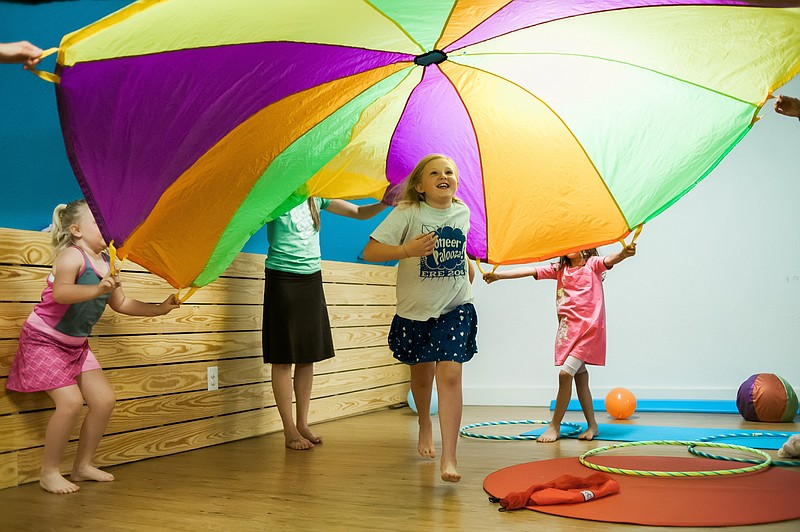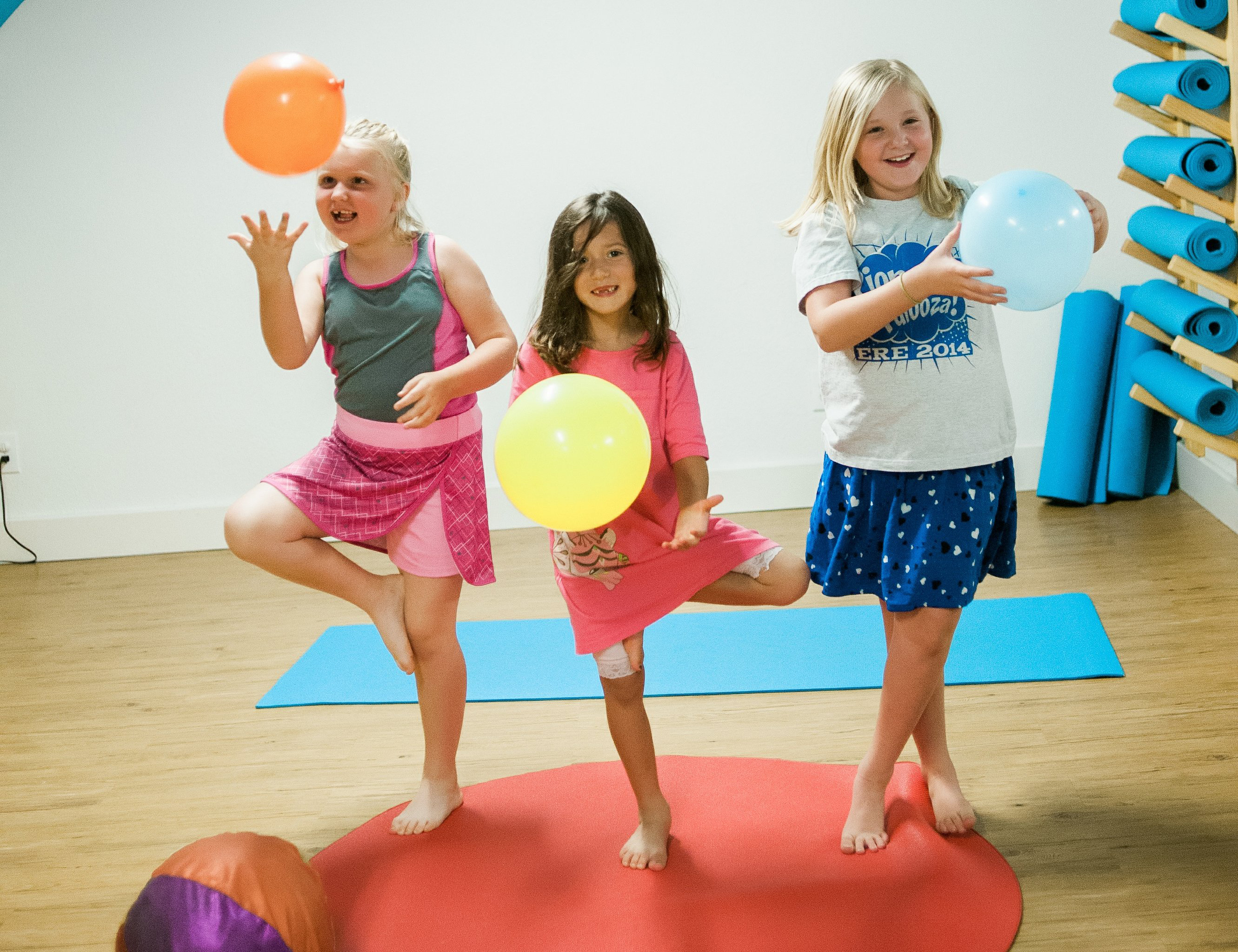If you're a yoga mom or pop, you've probably read up on some of the benefits the practice could have for your kids.
You know about the boost in confidence. The improved concentration. The invaluable calming techniques. But no matter how hard you try, you can't imagine your spunky ball of energy lying still long enough to perform even the corpse pose.
Grace Ratchford, co-owner and yoga teacher at Balance Studios, says that's OK. Kids don't think like adults or learn like adults - they shouldn't be expected to exercise like adults either.
Here, Ratchford shares a few reasons why children's classes are so much different (and more fun) than yours.
Kids love to work together.
Outside of acroyoga, a partner form that conjures images of Cirque du Soleil stunts, adults typically prefer to keep their eyes and bodies glued to their own mats during yoga class. But youthful yogis relish every opportunity to team up with a buddy for bunk bed pose or to link up with the whole class for tree pose, creating a giggling forest. The collaboration helps the children open up, build friendships and feel like part of something bigger, Ratchford says.
Kids don't just practice; they play.
Ratchford uses games like "Freeze Stance" to help kids expel excess energy and learn new poses. The game challenges children to dance their tails off to blaring music, then freeze in a predetermined pose each time the music stops. Other games, like the Simon Says-based activity "Yogi Says," cultivates the kids' listening and leadership skills as they take turns being "yogi."
FUN FOR ALL
Ratchford suggests a family game with benefits for parents as well as kids: a bubble race. Have each person blow a bubble indoors, racing to see who can blow theirs to the ceiling first. This will help the players practice their breathwork so they can remain calm in tense mental or physical scenarios.
But that only makes their classes more fun. When the lesson plan gets thrown out the window - which Ratchford jokes could happen as little as 5 seconds into class - the instructor gets to be more creative. He or she might introduce new activities, or props, like Beanie Babies, the kids must balance on their head or foot as they try to maintain a pose.
Kids are far more vocal.
While adult classes are often filled with meditative silence, children's groups are usually loaded with laughs, screams and chatter, and Ratchford says she tries to ensure each child feels safe to talk about whatever's on his or her mind that day. The conversations can range from what's in their lunchbox to their feelings about something bad that happened at school that day, Ratchford says, making each session therapeutic in more ways than one.
FIND THE BALANCE
Learn more about Balance Studios and their work with local kids at thisisbalance.com.

